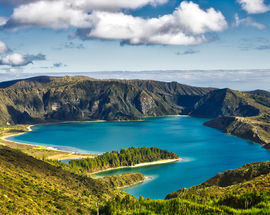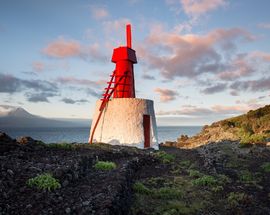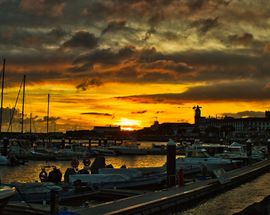As close to Morocco as it is to Portugal, the Azores have long garnered a reputation for wilderness and wildlife, with its growth as a popular destination for tourists somehow managing to work alongside that unspoilt array rather than putting it in danger. That might be down to the monolithic aura of everything here, from the forests to the mountains to the craters to the lakes. If you’re looking for urban excitement and city life, you’ve very much lost your way and should probably head 870 miles east back to Lisbon; the Azores are all about nature.
Sure, the sumptuous vineyards of Pico offer the tranquillity one associates with vineyards while the old town of Angra do Heroismo (one of the archipelago’s three capitals) is as enchanting as anything the mainland has to offer, but the Azores is all about hiking, paragliding, surfing, canyoning, sailing and all the rest, adrenaline junkie activities buttressed by tropical aesthetics that are usually the reserve of deep dreams. It all comes back to the views, it always will.
Those views are surely the reason that more than a third of the world’s whale and dolphin species stop by here for a pit stop on their eternal migrations, making the Azores of the planet’s premier places for checking out cetaceans. Sperm whales, pilot whales, bottlenose dolphins and fin whales are the most commonly sighted, but the lucky might just catch a glimpse of the iconic blue whale. Is it possible to only ‘glimpse’ the world’s largest beast? Head to the Azores to find out.






